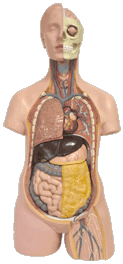At WiseGEEK, we're committed to delivering accurate, trustworthy information. Our expert-authored content is rigorously fact-checked and sourced from credible authorities. Discover how we uphold the highest standards in providing you with reliable knowledge.
What are the Different Types of Dental Grafts?
Dental grafts are used to replace deteriorated or damage tissue and bone or to support other dental implants. The two types of dental grafts are dental bone grafts and gum grafts. Sometimes, a gum graft is preemptive procedure to build up the protective layer surrounding the teeth and prevent the patient from needing a bone graft in the future.
Dental bone graft procedures are usually performed prior to the person having dental implants, which are artificial tooth roots, surgically placed in jaw. The bone grafting is done while the person is under anesthesia, and usually there is minimally pain and only slight swelling of the jaw after the procedure. After the implant is inserted, the jaw or teeth will be able to support crowns, artificial teeth, a bridge, or dentures. The three types of dental bone grafts are autografts, allografts and xenografts.

Autografts, also known as autogenous, are dental grafts made of bone materials harvested from another location in the patient’s body. The bone is usually taken from the person’s chin, jawbone, hip, or another part of the body. Autografts are usually the first choice of the physician because the bone taken from the person’s body is full of live bone marrow cells, including osteogenesis, osteoconduction, and osteoindunction cells. These cells speed up bone growth and reduce the amount of healing time required. This type of graft can cause the patient more pain because the bone must be harvested during an additional surgical procedure.
Allografts are dental grafts which use synthetic bone materials that have been created from the cadaver bone of another human. The bone is freeze dried and mixed with other materials, such as calcium phosphate, which act as the structural elements for new bone material to form on. Unlike autogenous material, allogeneic bone cannot regenerate bone material.
Xenografts are made from the cadaver bones of other animals, and most often the bones of cows are used to create the graft material. The bone material is then sterilized before being implanted. This procedure has a higher rate of rejection by the person’s body.
Gum grafts are performed to replace the gum tissue that surrounds the teeth and protects them from damage. Brushing, clenching, and grinding can cause the gums to recede, exposing the underlying teeth and bone, which then become exposed to erosive elements. Soft tissue gum grafts use material from the surface of the mouth to replace the missing or damaged gum tissue. Connective tissue grafts take tissue from the inside of the roof of the mouth and restore the missing areas of the gums.
AS FEATURED ON:
AS FEATURED ON:










Discuss this Article
Post your comments